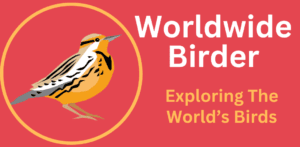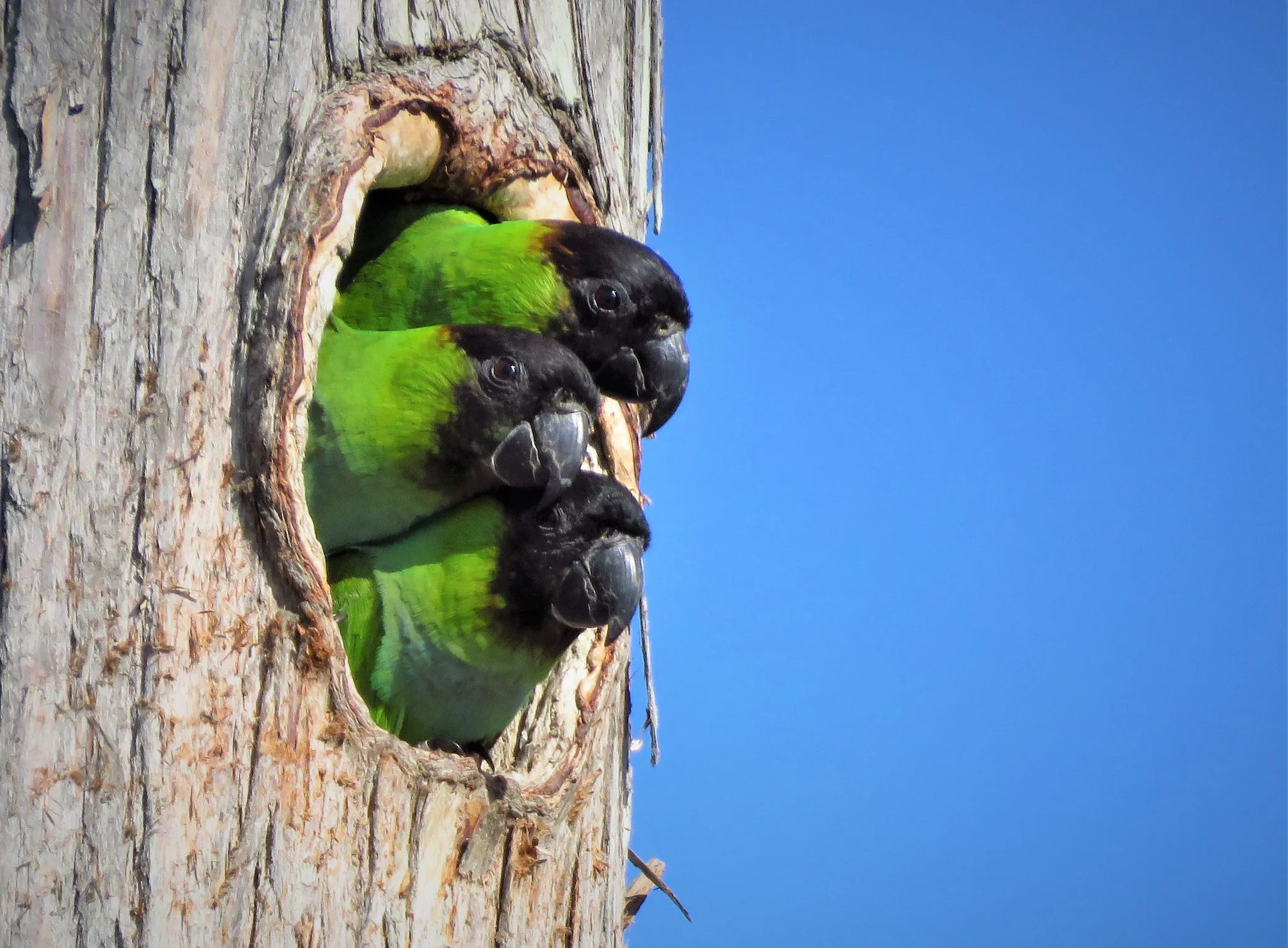It doesn’t get any more tropical in the continental United States than Florida, as the state is home to swaying palm trees and abundant fruiting trees. Although many humans flock to Florida, the state is also a haven for birds. However, many Floridians can’t help but wonder about Florida parrots. Are there parrots in Florida?
Those interested in learning if Florida hosts populations of parrots are in luck! I will thoroughly cover the topic of parrots in Florida while answering many parrot-related questions. I’ll also discuss some intriguing birds that Floridians should expect to see, so without further ado, let’s learn about the parrots of Florida!
Table of Contents
Are There Parrots In Florida?
First things first: we’ll have to address whether or not any Florida parrot species exist in the state. Are there parrots in Florida?
Yes, there are parrots in Florida! However, to be clear: most of the parrots that occur in Florida are actually parakeets. Therefore, know that if you hear someone mention a parrot in Florida, know that they’re probably talking about a parakeet.
There are presently sizable populations of nine parrot or parakeet species, although dozens of different parrots in Florida have been observed. In fact, there are even been exotic species such as rosellas and macaws observed in Florida.
Something that Floridians should keep in mind is that all of the various wild Florida parrots are non-native. Indeed, many refer to the types of parrots in Florida as invasive. However, labeling a species as invasive implies that it has a negative ecological consequence. The extent of ecological damage that invasive parrots in Florida cause is up for debate, but I’ll nonetheless refer to them as invasive species for the remainder of this article.
Now, you’re surely curious to know more about the various Florida parrots that can be found. Luckily, I’ve included more information about six Florida parakeets below, so read on to discover more about the most common parakeets that call Florida home.
Types of Parrots In Florida
Blue-crowned Parakeet
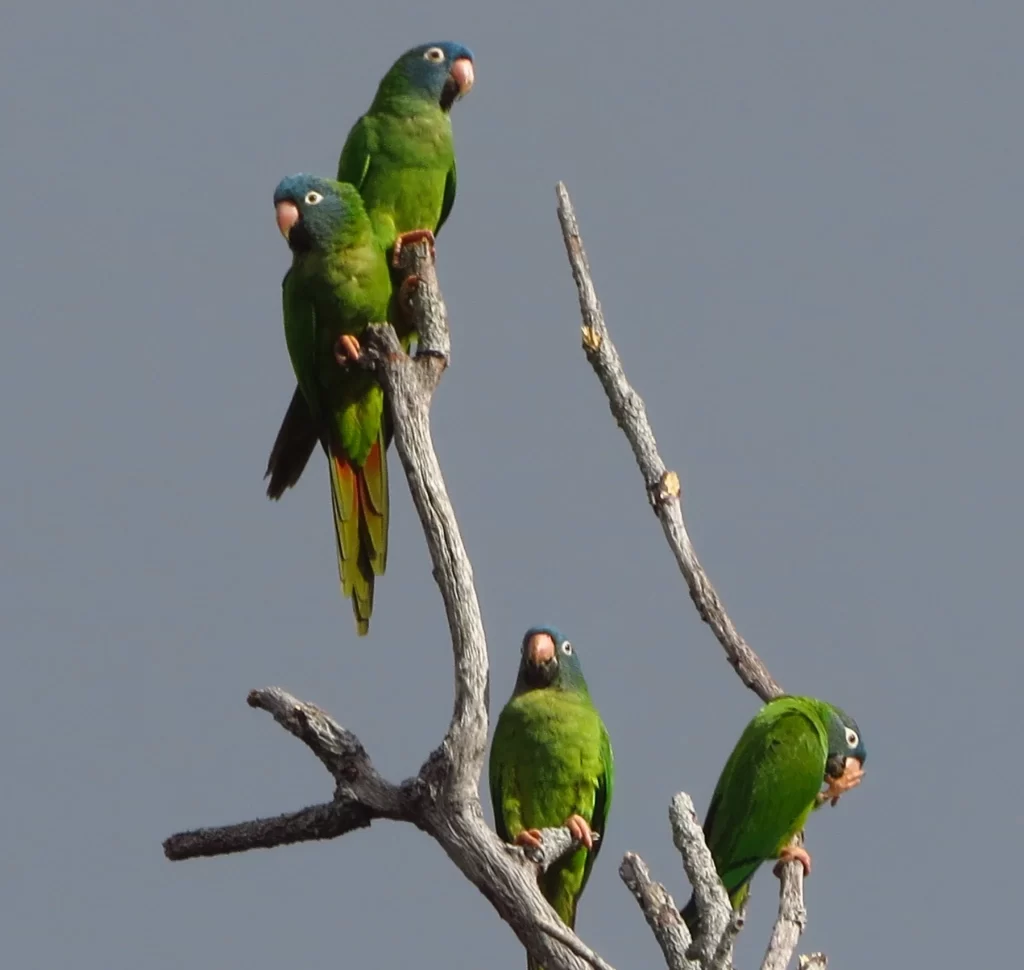
Blue-crowned Parakeets are green parrots in Florida with blue faces. Like all Florida parakeets on this list, Blue-crowned Parakeets are sexually monomorphic, with males and females looking the same. There have been more than 8,000 observations of these wild parakeets in Florida as per eBird data.
Blue-crowned Parakeets have two distinct subspecies, with one being native to northern South America and the other being native to northern Argentina, Paraguay, and Bolivia. They are traditionally found in areas that are more arid than the habitats that are encountered in Florida. Nonetheless, they have managed to thrive here.
Three separate populations of Blue-crowned Parakeets have become established in Florida, with strongholds being centered around St. Petersburg, Fort Lauderdale, and Eau Gallie. Here, they are common in residential areas, even being common backyard birds in Florida in some cases.
Mitred Parakeet
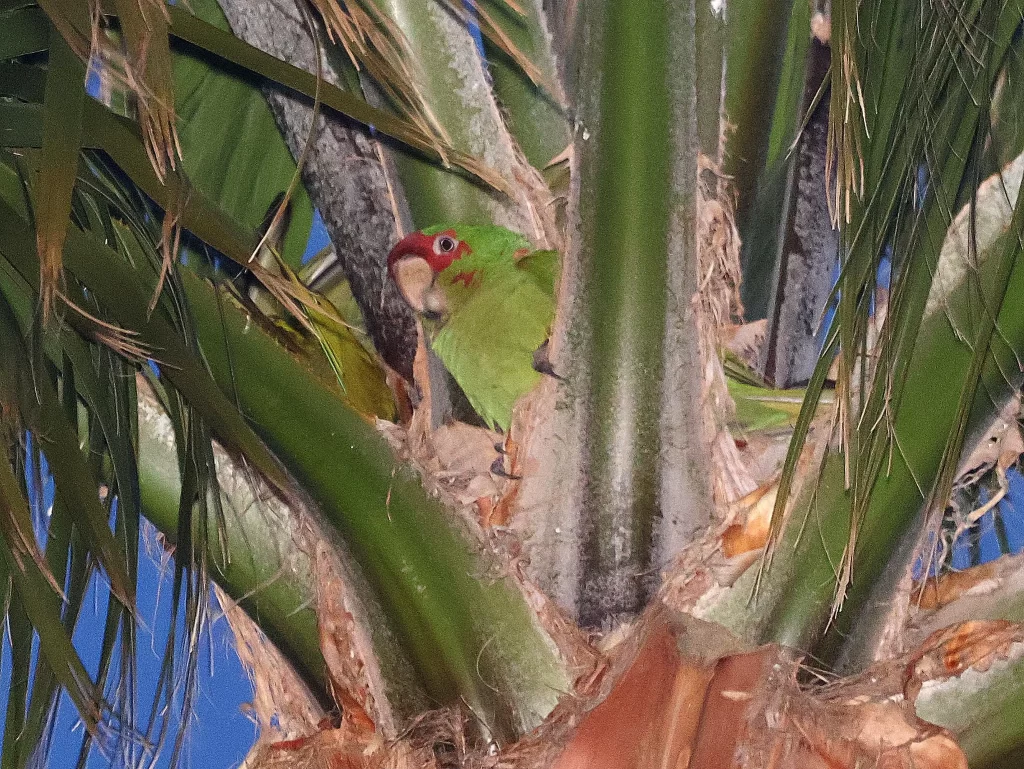
Mitred Parakeets are almost entirely green. Therefore, if someone asks, “What are the green parrots in Florida?” then know that they’re likely inquiring about this species. In addition to green, Mitred Parakeets have varying amounts of red on their faces, and they’ve got white around their eyes.
There have been nearly 6,000 observations of Mitred Parakeets in Florida. Nearly all of these observations have come from the Fort Lauderdale and Miami area, with no other areas of Florida having self-sustaining populations. Although they are now common in Florida, they are native to central Andean Mountain nations like Peru, Bolivia, and Argentina.
Some may confuse the Mitred Parakeet with the similar-looking Red-masked Parakeet. The two species certainly look similar, but Mitred Parakeets tend to have less red on their faces. Florida is not exactly the Andean Mountain habitat in which these South Florida parrots naturally live. However, they’ve managed to prosper here.
Monk Parakeet
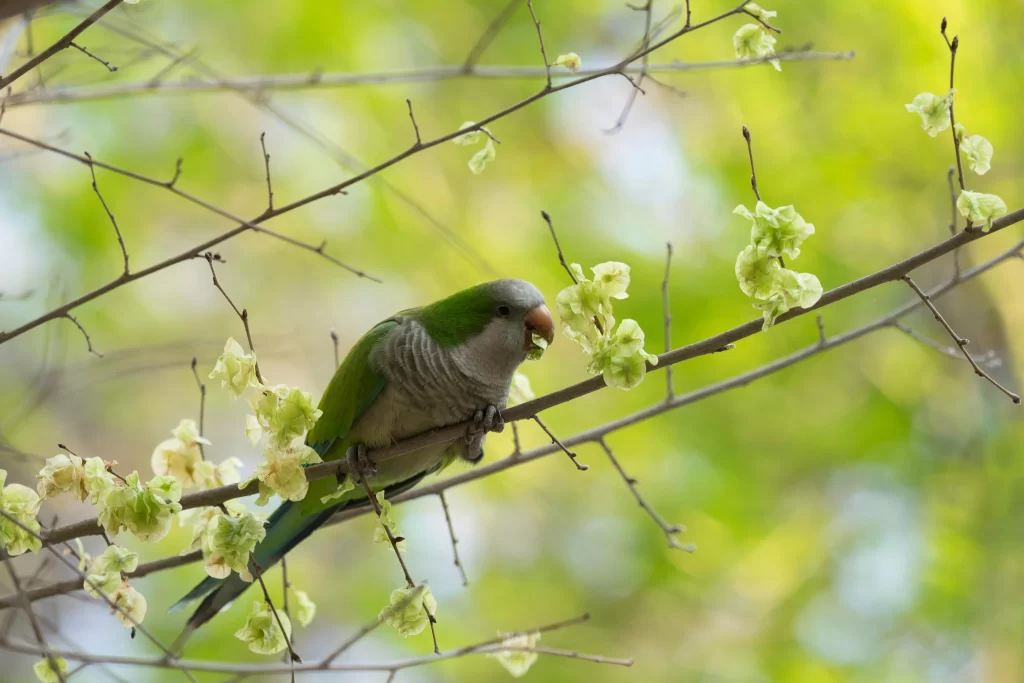
Monk Parakeets are charming green parakeets in Florida with white chests and faces. Additionally, they have a bluish color on their wings. Monk Parakeets are quite common in Florida, with more than 46,000 being reported here as per eBird data.
These Florida parrots are very social, and they are the only members of the parrot family that do not nest in tree cavities. Instead, Monk Parakeets build large communal nests made out of sticks. These impressive structures can support dozens of nests, and they are often constructed in trees or along utility poles or buildings. Monk Parakeets are known to incessantly scold Florida birds of prey that approach the nest too closely.
Monk Parakeets are more widespread in Florida compared to most other Florida parrots. Indeed, their strongholds are centered around St. Petersburg, Fort Myers, Miami, and the Florida Keys. They were formerly common in areas like Orlando, but populations have dwindled in some parts of Florida.
Nanday Parakeet
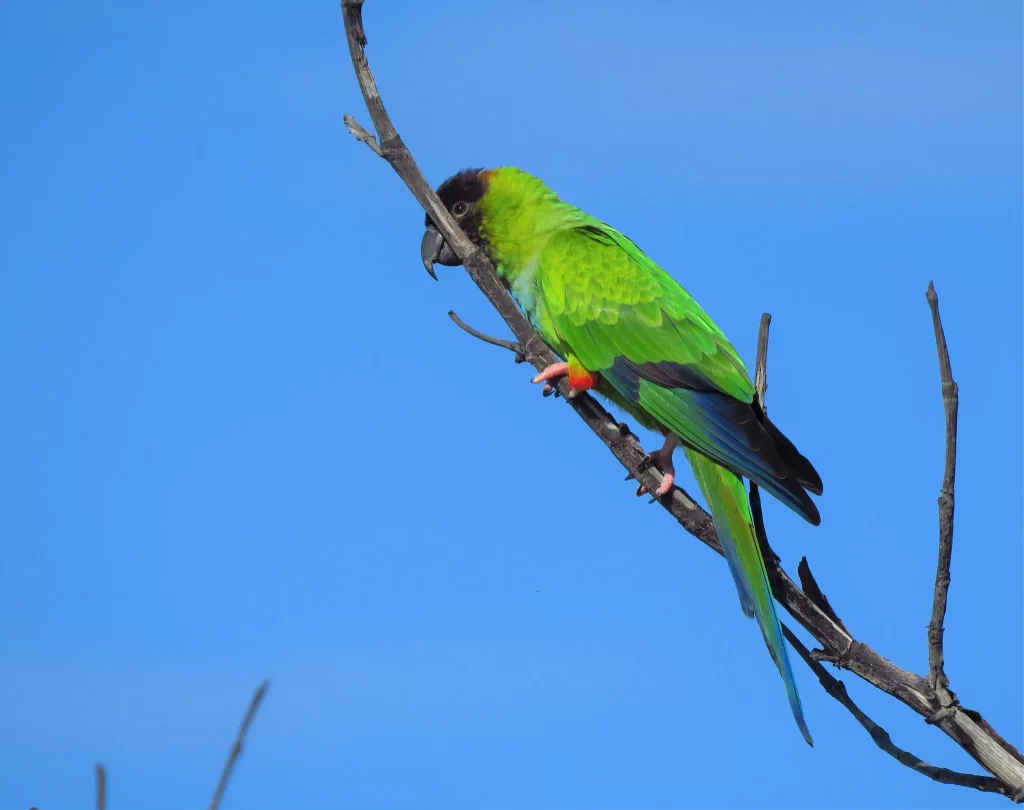
Nanday Parakeets are green Florida parrots with black heads, red thighs, teal chests, and dark wings. They are quite colorful, and–like other parrots–are gregarious, often gathering in moderately-sized flocks. Nanday Parakeets are the most common types of parrots in Florida, with around 63,000 observations being made.
These green parakeets in Florida are native to Paraguay, Brazil, and Argentina. However, they’ve been widely introduced to other parts of the world. In Florida, the strongholds for Nanday Parakeets are centered around St. Augustine, St. Petersburg, Bradenton, Fort Myers, and Boca Raton.
Nanday Parakeets seek out cavities in which to lay their eggs. Once they’ve selected a cavity, they simply lay their eggs in the space without adding any additional nesting materials. These Florida parrot species often forage with Monk Parakeets.
Red-masked Parakeet
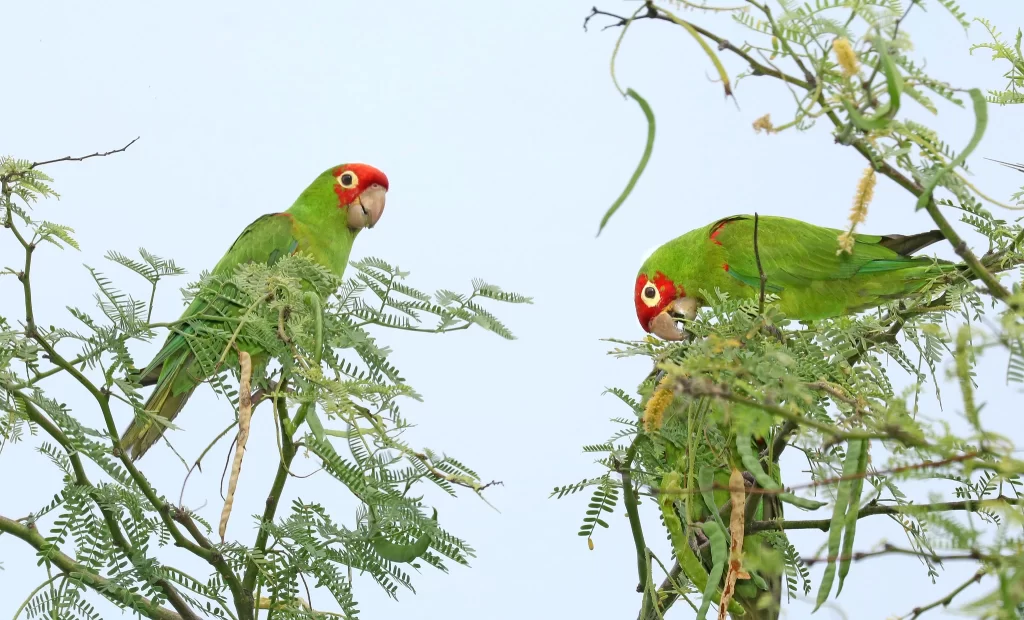
Red-masked Parakeets are largely green with red faces and some red on their wings. Moreover, they’ve got a cream-colored patch around their eyes. They look quite similar to the aforementioned Mitred Parakeet, their faces tend to have more red coloration. There have been about 4,000 observations of these wild green parrots in Florida.
Red-masked Parakeets have a fairly small native range, existing in Ecuador and Peru naturally. Unfortunately, native populations are in decline, leading them to be listed as near-threatened. However, they’ve been widely introduced in areas such as California, Hawaii, and Florida.
Red-masked Parakeets have a more restricted range in Florida compared to others on this list. Indeed, they are only found with regularity around Fort Lauderdale and Miami. Although there have been reports of these green parrots in South Florida in other large Florida cities, they’ve not been established elsewhere.
Yellow-chevroned Parakeet
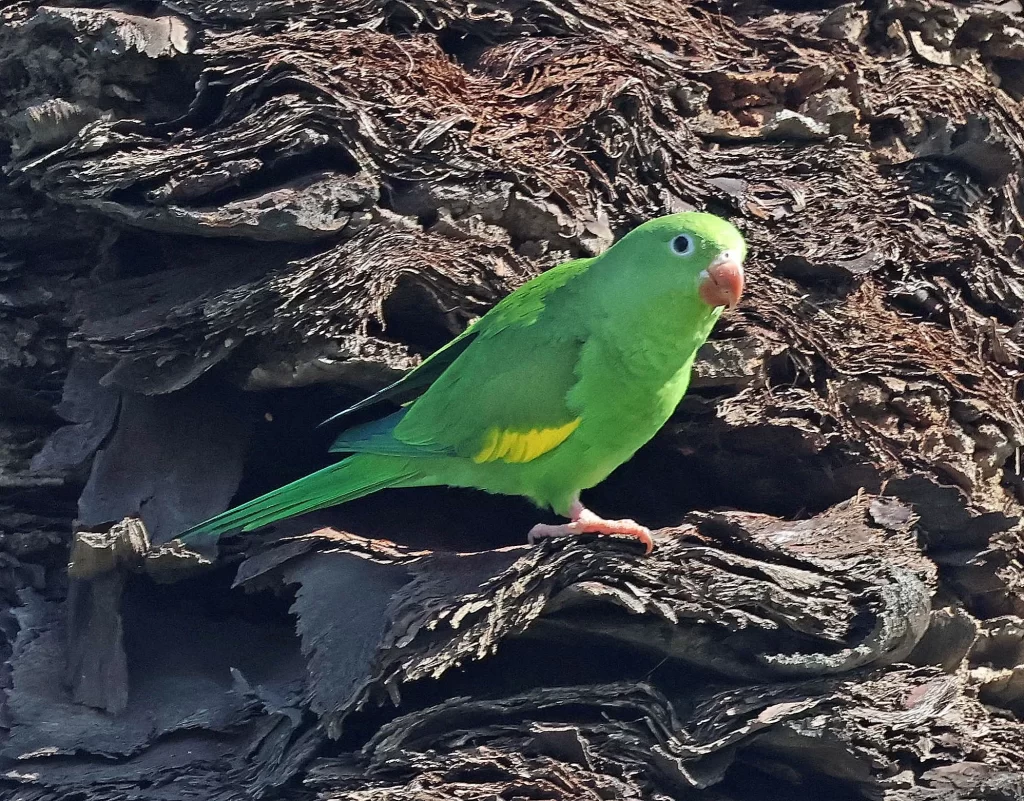
Yellow-chevroned Parakeets are aptly named, being green parakeets with yellow stripes along their wings. They also have prominent white circles around their eyes. In total, about 5,500 reports of these green Florida parrots have been made.
Yellow-chevroned Parakeets naturally occur in Brazil, Bolivia, Paraguay, and Argentina. In Florida, they’re concentrated around Miami and the surrounding cities. Studies suggest that populations appear to be slightly growing in Florida.
A boon in Yellow-chevroned Parakeet importation took place in the 1980s. The population of these invasive parrots in Florida is now thought to be primarily comprised of the descendants of these birds.
Why Are There So Many Invasive Parrots In Florida?
After reading this list that included the most common types of parrots in Florida, you may find it strange that there are so many invasive Florida parrots. So, why are there so many invasive parrots in Florida?
Well, as is the case with most introductions of invasive species, humans are to blame. You see, all of the invasive parrots in Florida are descendants of birds who have escaped the pet trade. Yes, the ancestors of wild parrots in Florida were removed from their homes and shipped to the United States to be sold as pets.
Many of these captive parrots either escaped from their enclosures or were purposely released by irresponsible people. These captive parrots would meet an unceremonious demise if they were released in most other places around the United States. However, Florida is an extremely hospitable location for these creatures, supporting favorable weather and abundant food resources.
Thus, some parrots and parakeets in Florida have found success in colonizing Florida. However, no one should intentionally release parrots into the wild in Florida, as most birds will quickly be killed in such an unfamiliar territory. Plus, Florida already has enough invasive species to contend with. Releasing additional invasive species could be very harmful.
Are There Native Parrots In Florida?
I’ve now talked at length about invasive parrots in Florida, but what about native parrots in Florida – do any exist?
Believe it or not, Florida does have one native species of parrot! Unfortunately, this species has now become extinct, with the last individuals dying less than 100 years ago in the 1930s. Florida was one of the last strongholds for Carolina Parakeets, hosting important family groups that readily bred in the early 20th century (link).
Alas, the demise of Carolina Parakeets was fast and furious, with the ultimate reasons for its extinction being purely speculative (link).
